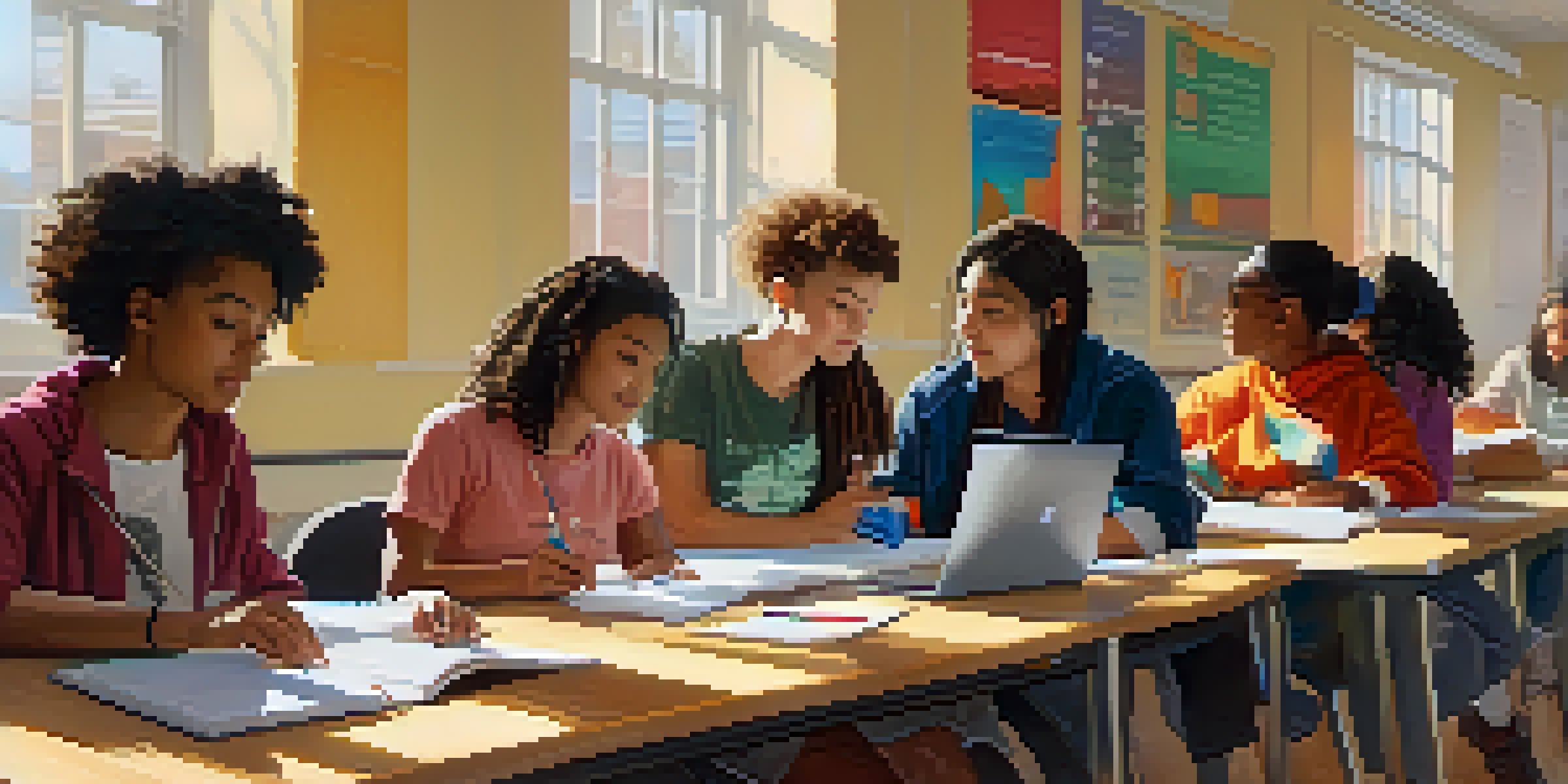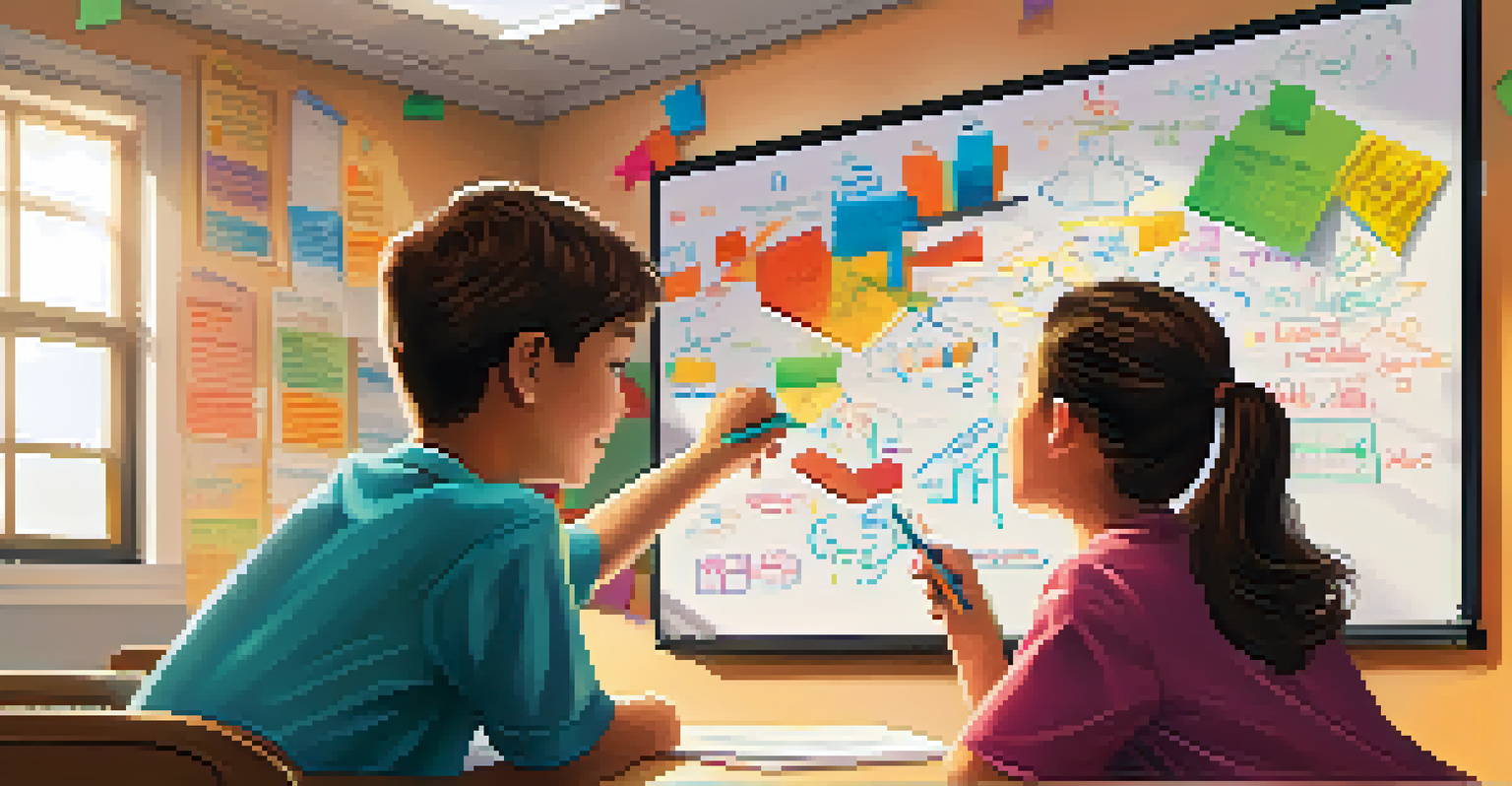Building Effective Peer Learning Partnerships Among Students

Understanding the Importance of Peer Learning
Peer learning is a powerful educational tool that enhances student engagement and retention. When students collaborate, they not only share knowledge but also develop critical thinking skills. This collaborative process encourages them to view problems from different angles, fostering a deeper understanding of the subject matter.
Tell me and I forget. Teach me and I remember. Involve me and I learn.
Moreover, peer learning can significantly boost confidence among students. When they explain concepts to their peers, it reinforces their own understanding and helps them realize their capabilities. This newfound confidence can translate into improved academic performance and a willingness to take on challenges.
Additionally, peer learning nurtures essential soft skills, such as communication and teamwork. In today’s interconnected world, these skills are invaluable, as they prepare students for future collaborative work environments. By engaging in peer learning, students are not just learning academic content; they are also gaining life skills.
Creating a Supportive Learning Environment
A supportive learning environment is key to successful peer learning partnerships. This can be achieved by fostering trust and respect among students, which encourages open communication. When students feel safe to express their thoughts and questions, they are more likely to engage actively in their learning.

Teachers play a vital role in establishing this environment. By setting clear expectations and providing guidance, educators can help students navigate their peer partnerships effectively. Encouragement and positive reinforcement can also go a long way in motivating students to collaborate.
Boost Engagement Through Collaboration
Peer learning enhances student engagement and retention by encouraging collaboration and critical thinking.
Furthermore, incorporating diverse learning styles into peer learning activities can enhance participation. Different students bring unique perspectives and strengths, making the learning experience richer. By embracing these differences, the classroom can become a vibrant hub of creativity and collaboration.
Establishing Clear Goals and Expectations
Setting clear goals is essential for effective peer learning. When students understand what they are working towards, it creates a sense of purpose in their collaboration. Goals can range from mastering a specific topic to completing a project, giving students direction in their efforts.
Collaboration allows us to know more than we are capable of knowing by ourselves.
Communicating these goals also helps students stay accountable to one another. By knowing what they need to achieve, they can track their progress and support each other in reaching these milestones. This accountability fosters a sense of belonging and teamwork within peer groups.
Moreover, defining expectations for participation and behavior can prevent misunderstandings. Establishing norms for communication, respect, and contribution ensures that all voices are heard. This clarity helps maintain a positive and productive learning atmosphere.
Matching Students for Effective Collaboration
The success of peer learning partnerships often hinges on how well students are matched. Pairing students with complementary skills can lead to more productive collaborations. For instance, a student who excels in math might partner with one who struggles, creating an opportunity for mutual support.
However, it's also beneficial to mix up partnerships regularly. Rotating partners exposes students to different perspectives and teaching styles. This variety not only keeps the learning experience fresh but also helps students develop adaptability and interpersonal skills.
Foster a Supportive Environment
Creating a supportive learning environment encourages open communication and trust among students.
Teachers can facilitate these pairings by considering factors such as learning styles, personalities, and academic strengths. By being intentional in their approach, educators can create dynamic partnerships that enhance the overall learning experience.
Encouraging Reflection and Feedback
Reflection is a crucial component of effective peer learning. Encouraging students to think about their collaboration helps them identify what worked well and what could be improved. This practice not only enhances their learning but also fosters a growth mindset.
Feedback should be constructive and specific, allowing students to understand their strengths and areas for improvement. Providing structured opportunities for feedback, such as peer reviews, can guide students in giving and receiving critiques effectively. This process builds communication skills and deepens their understanding of the content.
Moreover, integrating self-assessment tools can empower students to take ownership of their learning. By evaluating their own contributions and learning outcomes, they can set realistic goals for future collaborations. This sense of ownership can significantly enhance their motivation and engagement.
Utilizing Technology to Enhance Peer Learning
In today's digital age, technology can play a vital role in facilitating peer learning partnerships. Online platforms and tools enable students to connect, share resources, and collaborate outside of the traditional classroom setting. This flexibility can enhance engagement and accessibility.
For example, discussion boards and collaborative software allow students to work together on projects in real-time, regardless of their physical location. These tools can also support diverse learning styles by providing various ways to communicate and share ideas.
Utilize Technology for Flexibility
Leveraging technology facilitates peer learning partnerships, allowing students to collaborate effectively beyond the classroom.
However, it’s important to teach students how to use these technologies effectively. Providing training and resources can help them navigate digital tools while ensuring they maintain a focus on their learning objectives. This way, technology becomes an enabler of collaboration rather than a distraction.
Celebrating Achievements and Building Community
Celebrating achievements is essential in reinforcing the value of peer learning partnerships. Acknowledging both individual and group accomplishments fosters motivation and a sense of pride among students. This recognition can take many forms, from verbal praise to certificates or awards.
Building a community around peer learning encourages students to feel connected and supported. Activities such as group projects or study sessions can create a sense of belonging, where students share experiences and learn from one another. This community aspect can significantly enhance their overall educational experience.

Moreover, sharing success stories can inspire others to engage in peer learning. Highlighting how collaboration led to positive outcomes can motivate students to participate actively in future partnerships. A strong community not only supports learning but also cultivates lifelong friendships and networks.